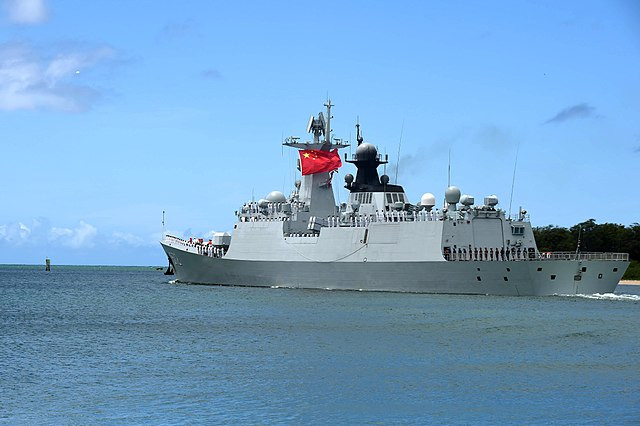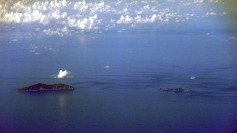The Chinese navy conducted a live-fire exercise in international waters between Australia and New Zealand on Friday, prompting concerns from Australian officials over the short notice given and causing airlines to divert flights. Australian Defense Minister Richard Marles confirmed that while China adhered to international law in providing notice, the limited time frame created operational challenges.
Several airlines, including Qantas and Air New Zealand, adjusted flight paths after picking up a broadcast from the Chinese People's Liberation Army Navy (PLA-N), which was conducting drills in an area east of Australia. Marles described the exercise as "not unprecedented, but an unusual event," adding that Australia had requested more details from Beijing regarding the timing and purpose of the drills.
The exercise involved a PLA-N task group consisting of a Jiangkai-class frigate, a Renhai-class cruiser, and a Fuchi-class replenishment vessel, which had traveled down the eastern Australian coastline after entering the country's maritime approaches last week. The Australian and New Zealand militaries were closely monitoring the fleet.
Prime Minister Anthony Albanese stated that it was unclear whether live fire had actually been used and noted that Australian defense officials had assessed there was no immediate risk to national security or commercial aviation. "China issued, in accordance with practice, an alert that it would be conducting these activities, including the potential use of live fire. It's outside of Australia's exclusive economic zone," he said, indicating that the exercise took place at least 200 nautical miles offshore.
Australian Foreign Minister Penny Wong is expected to raise the issue with her Chinese counterpart at the G20 foreign ministers' meeting in South Africa. In response, Chinese Foreign Ministry spokesman Guo Jiakun said in Beijing that the Southern Theater Command of the PLA had "organized a fleet of ships to conduct exercises and training in distant waters," emphasizing that all activities were carried out in line with international law and safety protocols.
Meanwhile, New Zealand's military deployed assets to monitor the Chinese ships in coordination with Australia. "Like Australia, our primary concern is the safety of our people, vessels, and aircraft. There is no ongoing danger to New Zealand," said New Zealand Defense Minister Judith Collins in a statement.
The Chinese naval maneuver comes at a time of heightened geopolitical tension in the Indo-Pacific. The PLA-N's increased presence in waters near U.S. allies has raised concerns among Western defense officials. Earlier this month, a Chinese J-16 fighter jet released flares near a Royal Australian Air Force (RAAF) P-8A Poseidon surveillance aircraft conducting a routine patrol in the South China Sea, in what Australian officials described as an "unsafe and unprofessional interaction."
A statement from Australia's Department of Defense confirmed that China's naval task force had been tracked through Southeast Asia before entering Australian maritime approaches. The Financial Times reported that Australia's navy had shadowed the Chinese vessels 150 nautical miles east of Sydney.
China has not publicly disclosed the objectives of its latest exercises near Australia. "We have not been informed by the Chinese government why this task group has been deployed into our region, and we have not been informed what its future plans are," said Collins.
Australia and New Zealand's response underscores a broader regional concern over China's expanding military footprint in the Indo-Pacific. Beijing has conducted more frequent naval and air force operations in areas where the U.S. and its allies maintain strategic interests, including the South China Sea and waters near Taiwan.
The latest developments come amid efforts by the U.S., Australia, and Japan to strengthen military cooperation as part of broader deterrence strategies. In January, the three nations conducted trilateral aerial drills involving U.S. B-1B bombers, F-16 fighters, and South Korean F-35 stealth jets in a show of force against North Korean provocations.






